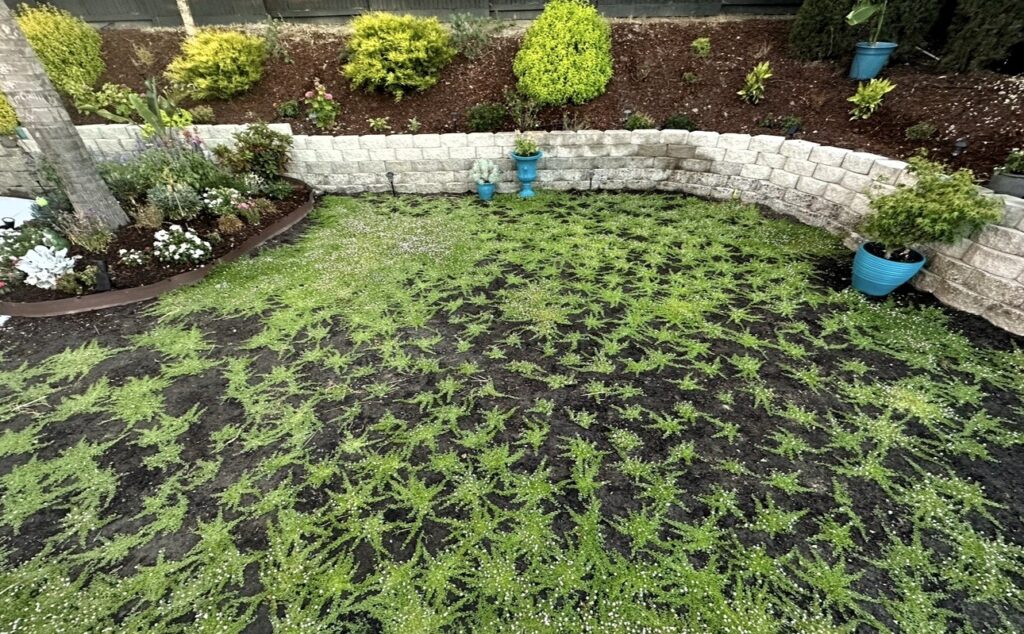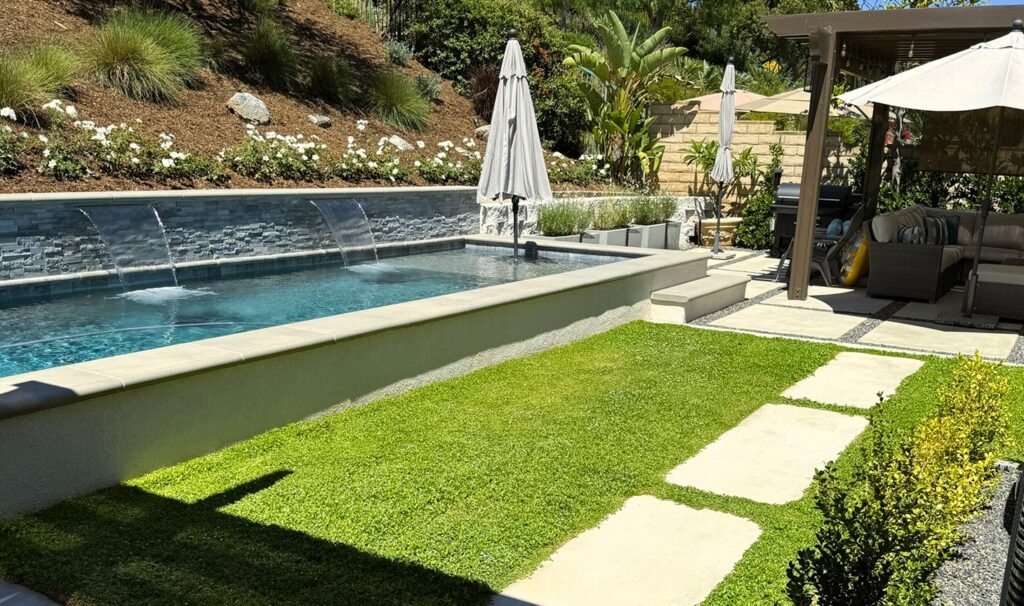
Tips for Hiring a Great Kurapia Installer
When you’re investing in a landscape solution like Kurapia, you’re making a wise choice. These plants and their very high satisfaction rate is why our company continues to grow as more and more people are purchasing it.
However, as fast as we are growing, we aren’t able to do the installation ourselves. While our team of scientists, horticulturalists, and nursery experts could do a wonderful installation, we simply don’t have the human power. Therefore the installation falls on you, our customer, to hire a good landscaper if you can’t do the work yourself.
Thinking of planting Kurapia yourself? Consider looking at our support guide. It’s very easy most of the time to do a lot of the work yourself. The key is making sure you install and have good irrigation, clear the site of weeds, amend the soil if needed, then install the plugs correctly. However, not everyone has the time, energy, and resources to do all this yourself.
Hiring a landscaper can be difficult. Some landscapers hire unqualified laborers, work very inefficiently, and don’t really know what they’re doing. If they seem too good to be true, they may be. These landscapers focus on getting the work “done” as quick as possible so they can finish as many contracts as possible. These landscapers typically cut corners and skip critical steps so they can keep making as much money as possible. It’s a tough industry, and it’s never been tougher with all the current political climate, and companies seem to be working to make as much money as possible before their competition does, and at a cheaper price to get your money.
Tips For Hiring a Landscaper to Install Kurapia
Find a landscaper who is local to you. Someone who is familiar with your soil type, your climate, the microclimates (areas where it’s colder or hotter than normal). The water you’ll be using is also really important. We recommend using Nextdoor.com to find a qualified landscaper. You’re neighbors can help introduce you to a good company. A personal referral from a neighbor or friend is going to become more reliable than websites that rely on amateur (and often dubious) reviews.
Don’t order the plugs until your site is ready. This means the site has been cleared of weeds; there is working irrigation; the soil has been prepared for installation with soil amendments. If you have compacted soil, it has been tilled, and clay and sandy soils have been improved (see our support guide for more information about this).
Make sure your landscaper works with multiple visits. Any landscaper who claims they can do the complete job in one visit isn’t doing you any favors. Let’s explain why:
Why Your Landscaper Needs Multiple Visits to Install Kurapia
1. Weeds take time to remove. Just cutting the weeds off from the surface with a weed-whacker or such won’t get rid of the problem. With some annual weeds this works ok, but many weeds will immediately create wider and stronger plants. Also, anytime you disturb the soil surface, you expose more weed seeds to the surface, which when you combine water, sun, and soil, these weeds will germinate. If you have nearby areas where the soil has unmanaged land where weeds are constantly growing, then weeds can constantly be sending new seeds to your soil. Be sure you review our support guide for information on products and techniques to help this.
2. Soil takes time if it is being amended. Despite what some landscapers may tell you (a favorite tactic to charge for unnecessary services), you don’t have “bad soil” that has to be removed with “good soil”. Typically this technique is where soil is trucked off site and dumped at a landfill and you’re sold topsoil, which is just a mix of compost and sand, usually made from wood and leftovers from quarries. The key to amending soil is adding additional organic matter, which is where seed-starting mix mulch is a great start. Be sure you review our support guide for your soil type.
3. Plugs need to be planted correctly. We see a lot of the time landscapers don’t plant the plugs deep enough (they should never be sticking out of the ground. Those soil plugs need to be below the soil surface for best results). We see landscapers who don’t loosen the soil around the plugs, just making little tiny plug sized holes and jamming the plug in. The soil around each plug needs to be loosened so the roots can start to grow into the soil around it. That’s why we recommend the bulb auger, as these are very inexpensive and can speed up installing with a cordless drill.
4. Watering is also really important. Make sure your irrigation system is watering only drought tolerant plants in the same irrigation station. Once the plugs are planted, they need to be watered and now allowed to dry out that first week or so. The plants are still relying on the roots inside the plug’s soil, and if they dry out, the stems will collapse and the plant will die. This is why watering has to start shallow and frequently, however frequently that is depends on your soil, the weather, and mulch. Typically we suggest a daily watering for the first week but adjust to your parameters. Many landscapers don’t know that Kurapia’s roots can grow as long as ten feet, unlike other groundcovers like grass and Dymondia which only grows an inch or so.
The Second Week of Your Kurapia Installation
Then you need to start gradually watering longer but not as often. Make sure your landscaper and you have discussed this. If you’re using an automatic sprinkler, be sure you both understand how to modify the irrigation system you have. If the irrigation runs at the same timing as the day it was installed, the roots will never grow deeply, and you might find your plants having issues with rot, drying out (because the roots aren’t deep enough), not to mention the incredible waste of money watering!
Very importantly, don’t use fertilizer when you install this plant! Many landscapers will use strong “starter” fertilizers in their installation, many of them made for shrubs, trees, grass, or other plants. Kurapia stores their nutrients in their leaves, and only needs fertilizer applied at half strength on established plants in the fall and spring. Be sure you note our recommended fertilizers on our support page. Typically the best results come from good, healthy soil that’s rich in nutrients that comes from organic material (which comes from good compost and seed starting mulches).
Conclusion
A good landscaper is worth their weight in gold, and you want to be sure your investment in Kurapia is treated with the same attention to quality we apply when we grow and ship them to you. Make sure you have a great professional to ensure you have success and have a great lawn! Remember, our support page is in English and Spanish.
Kurapia delivers where it matters: low water, low maintenance, high durability, and big curb appeal. Whether you’re looking to save on utilities, ditch the mower, or meet local sustainability goals, Kurapia is the ultimate drought tolerant groundcover and lawn alternative.
Thank you visiting Kurapia.com, the ultimate drought tolerant groundcover. We are the inventor and sole grower of Kurapia. Click to order Kurapia New White or Kurapia Pink.
Thank You!


